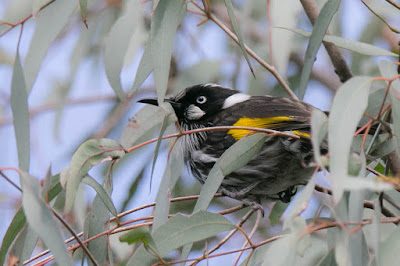Fan-tailed Cuckoo
Fan-tailed Cuckoo Cacomantis flabelliformis
A bright and sunny morning at Willowmavin. I was walking through thick young trees which have grown up after the fierce fires of 2014. The wattles are beginning to die off and eucalypt saplings are now beginning to look like mature trees.
The cuckoo's very loud call, immediately tells the world he or she is about. The descending whistle is quite easy to identify and with a bit of quite creeping around, they can be soon found, perching on branches, fence posts or in this case, an old clothes line, where they watch and wait to feed upon insects moving about on the ground beneath them.
Of course cuckoos are well known for their habit laying their eggs in the nests of other birds, usually much smaller birds. They will push the eggs of the resident birds from the nest and then lay their own egg to replace those they have ousted. Generally cuckoos lay a single egg in a nest, but can lay multiple eggs across multiple nests.
It is a sad sight to see small birds, working frantically to provide food for their much larger foster brood.
Brood parasites is the expression used to describe their behavior.
.jpg)
.jpg)
.jpg)
.jpg)




